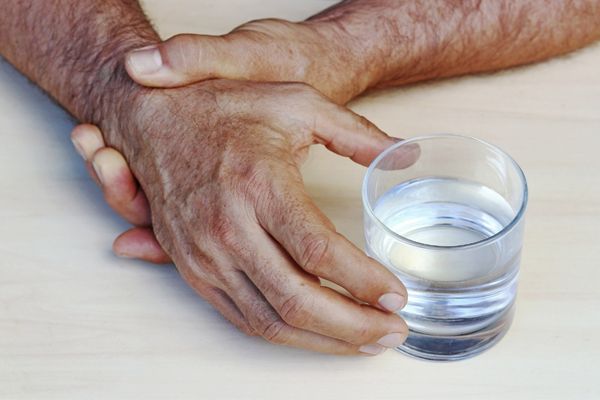Sober living is a structured community environment for people in recovery from substance abuse. It provides safe, supportive spaces for individuals to live as they work toward sobriety. These environments are typically run by individuals or organizations with experience in addiction recovery.
Research suggests that sober living homes can be an effective option for individuals in recovery. Some studies indicate that those who participate in sober living programs have higher rates of abstinence and better overall outcomes than those who do not.
This article explores why it’s so essential to maintain a healthy environment during your journey to sobriety and how sober living programs can provide them.
What is Sober Living?
Sober living is a transitional living arrangement designed to provide a supportive and drug-free environment for individuals in recovery from substance use disorders. Often referred to as sober living homes or sober living communities, these residences offer a safe and stable living space for those who are newly sober or in the early stages of recovery.
Sober living homes typically have house rules that residents must follow, such as maintaining abstinence, attending regular support group meetings, and participating in household chores. These rules help to create a structured and accountable environment that encourages residents to develop healthy habits and behaviors.
Some sober living homes provide access to peer support, counseling services, and educational opportunities that can help residents develop the skills and coping strategies needed to navigate life in recovery.
The Benefits of Sober Living Environments
Maintaining a sober living environment can provide various benefits for individuals in recovery.
- Increased Accountability: Sober living homes typically have house rules that residents must follow, promoting accountability and responsibility. This can help individuals develop a sense of discipline and structure essential to maintaining sobriety.
- Peer Support: Living with others who are also in recovery can provide individuals with a sense of community and support essential to maintaining long-term sobriety. Peer support can help individuals stay motivated and committed to their recovery goals.
- Safe and Drug-Free Environment: Sober living homes provide a safe and drug-free environment where individuals can focus on their recovery without risking relapse. This can be particularly important for individuals who may not have a supportive or drug-free living situation at home.
- Easier Transition to Independent Living: Sober living homes can provide a transitional living environment to help individuals transition from a more structured treatment setting to independent living. This can be particularly important for individuals needing additional support and resources as they work towards living independently.
- Improved Quality of Life: By providing a supportive and drug-free living environment, sober living homes can help individuals improve their overall quality of life. This includes improved physical health, mental health, and relationships with others.
Maintaining a sober living environment can provide individuals with the support, structure, and accountability needed to maintain their sobriety over the long term. It can help individuals build a strong foundation for their recovery and improve their overall quality of life.
The Role of Your Environment in Sobriety
Those in addiction recovery are in a vulnerable position where the people and environments around them play a significant role in their progression to sobriety. The following are some of the most critical environmental factors that play a role in your recovery.
Distractions & Triggers
The environment in which an individual in recovery resides can significantly impact their ability to maintain sobriety. In early recovery, avoiding triggers and distractions that may lead to relapse is imperative.
Triggers can be anything from people, places, or things that remind the individual of past drug or alcohol use. Examples of common triggers may include certain social situations, negative emotions, or even specific songs or movies.
A sober living environment minimizes distractions and triggers by providing a safe and supportive space where individuals can focus on their recovery without the risk of relapse.
Positive Influences & Support
In addition to avoiding negative influences, it is also important for individuals in recovery to surround themselves with positive influences and support. Sober living homes often provide residents with access to peer support, counseling services, and other resources that can help them build a strong support network.
If you don’t live in a sober living home, focus on building a sober environment with positive influences. Stay away from toxic people that still follow negative lifestyle patterns, such as using drugs and alcohol, gambling, partying, etc.
Establishing Healthy Habits
Another important role of the environment in sobriety is helping individuals establish healthy habits. Sober living homes typically have house rules encouraging residents to engage in healthy activities like exercise, healthy eating, and regular sleep patterns.
Living in a sober environment is about having a healthy routine that promotes stability and structure, which can be key to maintaining sobriety.
The Importance of Sober Living Environments for Long-Term Recovery
Sober living environments play a critical role in the recovery process for individuals with substance use disorders. By providing a supportive, structured, and drug-free living environment, sober living homes can help individuals build a strong foundation for their recovery and maintain their sobriety over the long term.
Sober living homes can help individuals avoid distractions and triggers that may lead to relapse while providing access to peer support, counseling services, and other resources to help individuals build a strong support network. Additionally, living in a sober environment can help individuals establish healthy habits and routines that promote stability and structure.
Whether transitioning from a more structured treatment setting or seeking additional support to maintain sobriety, sober living homes offer a safe and supportive living space for individuals in recovery.









